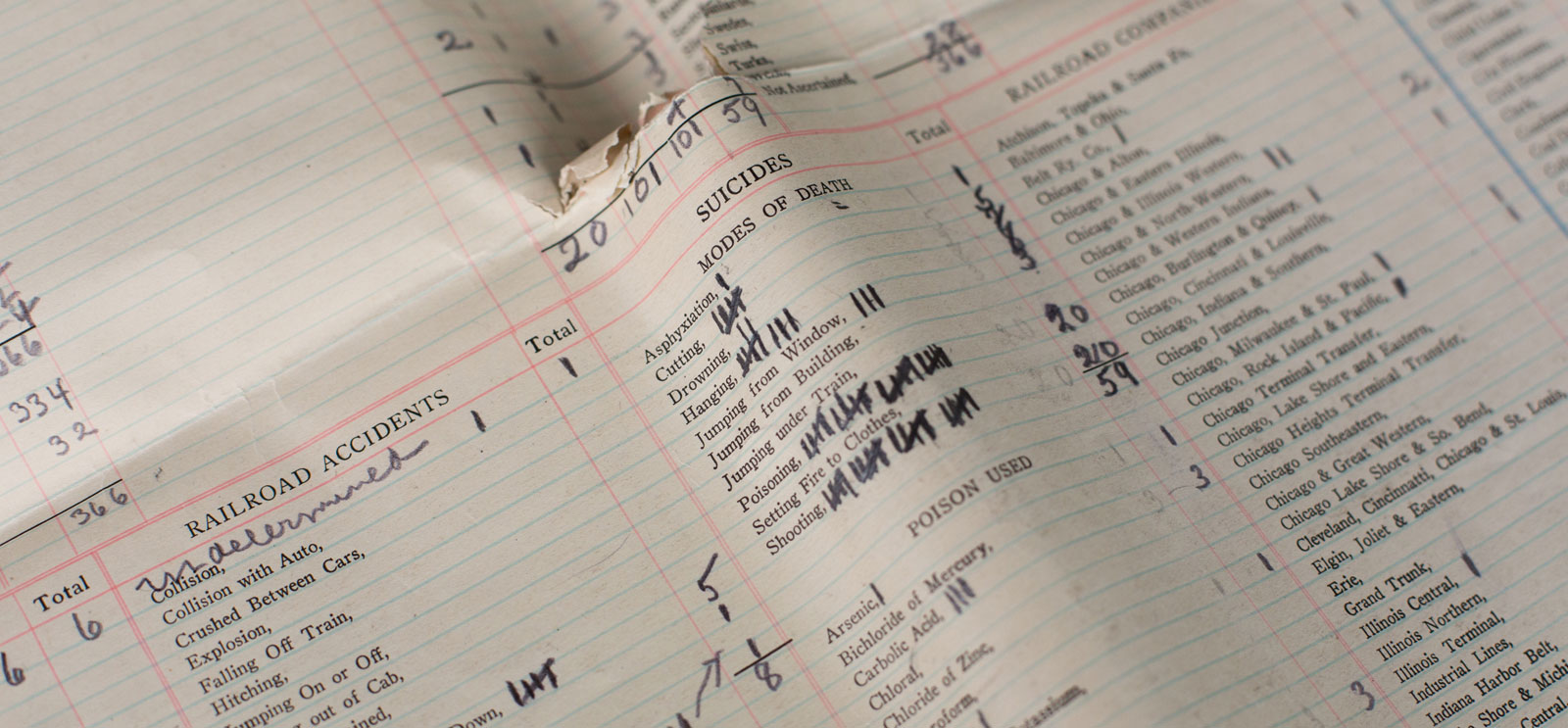
Mapping the Young Metropolis, curated by Harvey Choldin, includes instruments and hand-drawn maps Chicago school sociologists used in the 1920s and 1930s to research the city’s neighborhoods. (Photography by John Zich)
How the Chicago school of sociology changed the field.
Harvey Choldin, AB’60, AM’63, PhD’65 (Sociology), didn’t know what he was getting himself into. As a member of the University of Chicago Library Society, the University of Illinois professor emeritus of sociology enjoyed attending new exhibits, especially ones featuring materials from the University archives. Three years ago he suggested to Daniel Meyer, AM’75, PhD’94 (History), director of the library’s Special Collections Research Center, an exhibition on the Chicago school of sociology. “And I became curator,” Choldin says, “which I didn’t expect.”
As the University marks the Chicago school’s 100th anniversary, the library commemorates the occasion with Choldin’s exhibit, Mapping the Young Metropolis: The Chicago School of Sociology, 1915–1940, at the Special Collections Research Center June 22–September 11.
[[{"type":"media","view_mode":"media_original","fid":"2641","attributes":{"alt":"","class":"media-image","height":"535","typeof":"foaf:Image","width":"460"}}]]
(Photography by John Zich)
Although it’s not known for certain who dubbed the researchers—who pioneered urban sociology by combining theory and ethnographic fieldwork in the city of Chicago—“the Chicago school,” or when it officially began, many link the name to the 1915 publication of professor Robert Park’s influential essay “The City: Suggestions for the Investigation of Human Behavior in the City Environment.”
In the essay, Park argues that sociologists should use the city as their social laboratory. “Chicago, at the time, was a perfect site for social investigation,” says Choldin. “It was a new city, and it had hundreds of thousands of immigrants, poverty, gangs, crime, prostitution, divorce, and other ‘social problems.’”
[[{"type":"media","view_mode":"media_original","fid":"2642","attributes":{"alt":"","class":"media-image","height":"707","typeof":"foaf:Image","width":"460"}}]]
(Photography by John Zich)
Much of the sociology archive is made up of materials belonging to Sociology chair and longtime faculty member Ernest Burgess, PhD 1913 (Sociology), who, says Choldin, “kept everything.” Sifting through it all and deciding what to include in the exhibit was, he says, a fascinating endeavor. “Just sitting in the reading room going through files: it’s great fun.”
Amid the original books and papers and research instruments, Choldin’s favorite part of the exhibit is the maps the sociologists created. “They were really crazy about maps of Chicago and its neighborhoods,” which denote the locations of different groups in the city: “boys’ gangs: Irish, German, Polish, and others.” The books and dissertations that came from this research, Choldin says, such as The Ghetto by Louis Wirth, PhB’19, AM’25, PhD’26, remain relevant today.
[[{"type":"media","view_mode":"media_original","fid":"2643","attributes":{"alt":"","class":"media-image","height":"420","typeof":"foaf:Image","width":"460"}}]]
(Photography by John Zich)
The researchers’ work wound down with the start of World War II, when many UChicago graduate students went into the armed forces. Still, Chicago school alumni went on to work and teach around the country. “Chicago sociology has always been grounded in facts, and collecting them systematically,” Choldin says. “Before that, sociology was a brand of philosophy and history. But then Park and Burgess told their students, ‘OK, kids: go out there and meet people, observe people.’”
“To be grandiose,” Choldin says, “the Chicago school changed the course of sociology, and it put the University of Chicago on the map as having the eminent sociology department in the country.”
